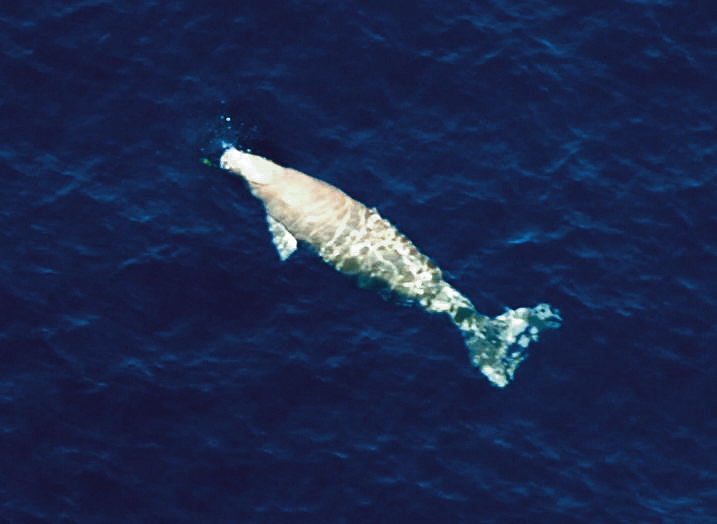In March, sounds appearing to be dugong calls recorded 23 times total, rare coral also found

Caption: The endangered dugong, photograph taken in 2008 off the coast of Kayo, Nago (photographed from a helicopter)
May 16, 2020 Ryukyu Shimpo
March marked the second month in a row, following February, in which sounds appearing to be dugong calls were recorded by an underwater recording device installed in the ocean at the Henoko base construction site, where a base is being built as part of the relocation of U.S. Marine Corps Air Station Futenma to Henoko, Nago. On May 15, the Okinawa Defense Bureau reported the dugong calls at a meeting of the “Environmental Monitoring Committee” expert commission. Further, it was also revealed that a new colony of Porites okinawensis, a type of coral that is registered on the Ministry of the Environment’s red list of endangered species, has been discovered in Oura Bay. The sounds appearing to be dugong calls were recorded at the same spot as in February. The sounds were confirmed nine times on March 6, once on March 9, six times on March 13, twice on March 25, and five times on March 29. Meanwhile, no dugongs were sighted, and no seaweed feeding trails were seen.
In April, the Okinawa prefectural government instructed the Defense Bureau to stop the construction and do a survey of dugong activity, but according to the Defense Bureau, there was no discussion of stopping the construction at the meeting on May 15. The Defense Bureau will expand the surveys they have been carrying out already and aim to confirm the habitation status of the dugong.
The newly discovered Porites okinawensis colony was found 5.5 meters below the ocean surface, and is 3.2 centimeters in diameter. The Defense Bureau stated that the coral has experienced bleaching overall, and that it plans to continue observation. Members of the committee advised the bureau to take are that the construction does not impact the coral.
The committee meeting was held by video call in order to avoid spread of infection of the novel coronavirus.
(English translation by T&CT and Sandi Aritza)
Previous Article:Sunflowers at night: chrysanthemum farmer grows 50,000 sunflowers as a secondary crop
Next Article:Photo Gallery: Take a glimpse at 1950s postwar Okinawa
[Similar Articles]
- ODB denies that majority of transplanted scarce coral died as an “effect of construction”
- Henoko construction should be halted to protect scarce coral from further destruction
- Dugong survey fails to confirm that dugong still inhabit ocean around Okinawa Island
- Okinawa Defense Bureau begins talks with Okinawa prefectural government regarding endangered coral
- Henoko seawall construction continues without transplanting Oura Bay coral
 Webcam(Kokusai Street)
Webcam(Kokusai Street)


